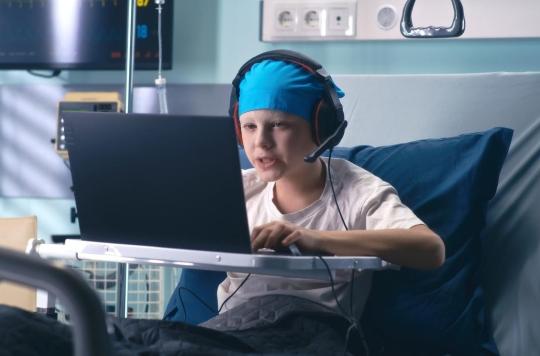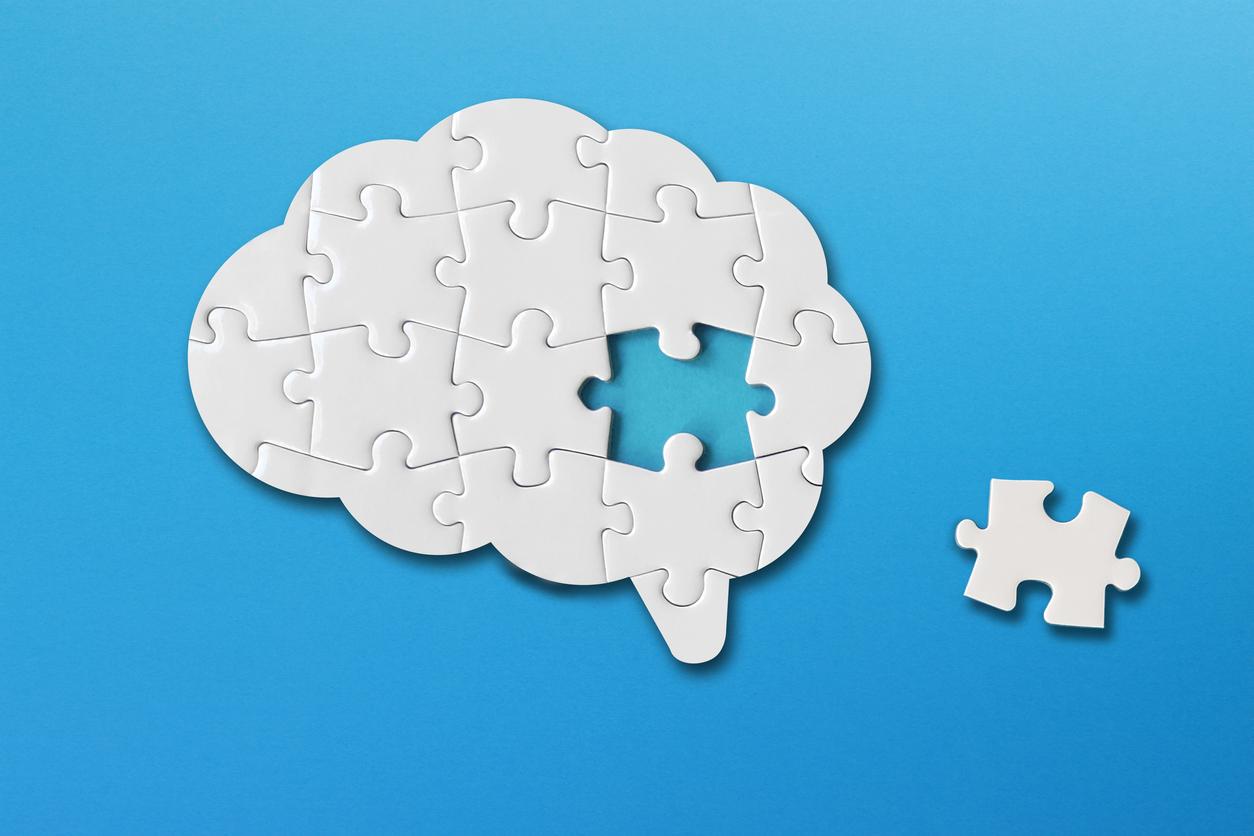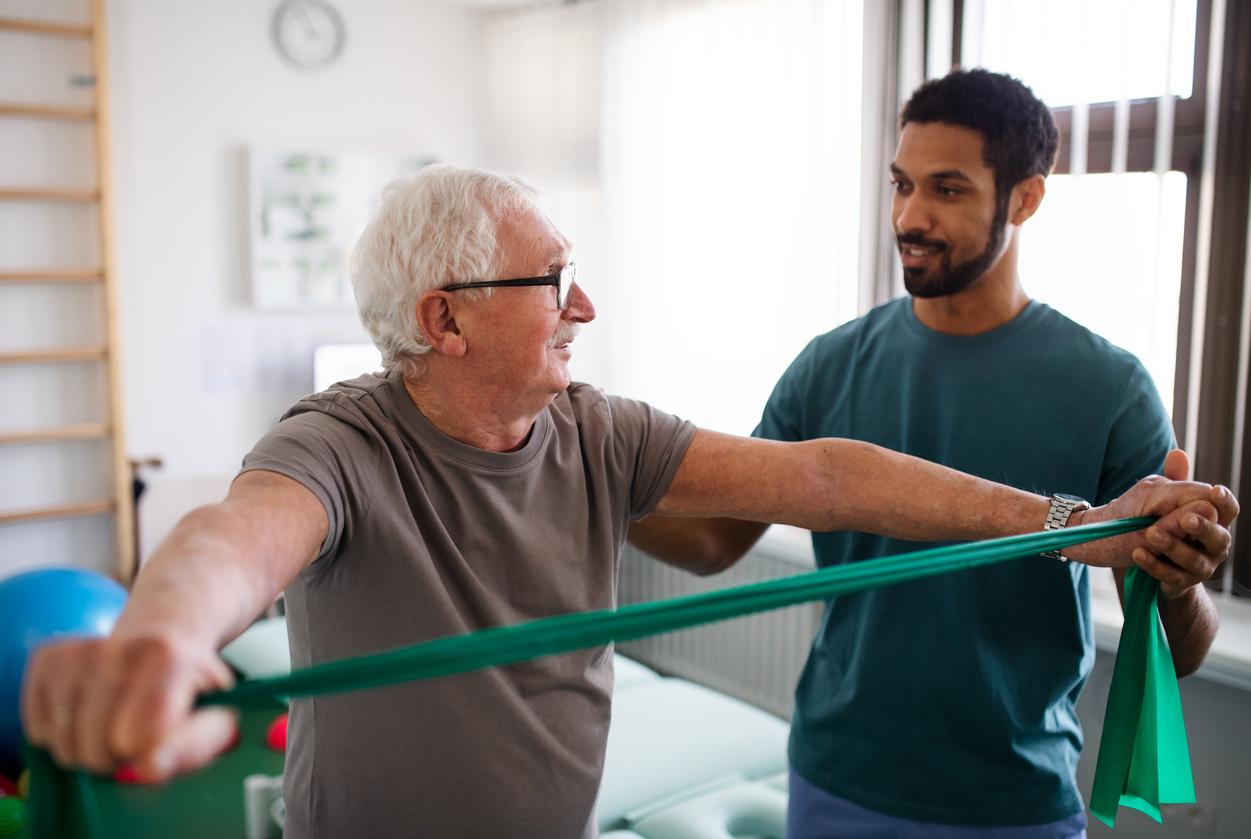Pain management, fight against Alzheimer’s, treatment of phobias… Often criticized for their addictive nature, video games can be a tool of the future in the field of care. Catherine Rolland, in charge of the Science and Video Games Chair (ScienceXGames) at Ecole Polytechnique since 2019, tells us more.

Why Doctor: How can video games be a therapeutic tool?
Catherine Rolland : It can be an asset both for patients and for health professionals and caregivers. Patients first: video games can “entertain” them in the literal sense of the term, especially for pain management. Take the example of severe burn victims who suffer during manipulations, bandage changes or even afterwards, during rehabilitation to relearn how to make movements: thanks to virtual reality helmets, they are immersed in a universe far from what they are living. For example, in “Snow world”, the player evolves in an environment of ice and must throw snowballs at penguins… This entertains the brain of the patient, who must return a multitude of information related to the game, and so focus on something other than the pain. It’s like television, but better, because there’s interactivity. The idea is to capture the patient’s attention to divert it from what he is undergoing. The brain is “deceived”!
The video game therefore also plays on the motivation of a patient to seek treatment…
Motivation is not always at its height in sick or impaired people… Video game therapy works well in rehabilitation patients, especially those who have suffered a cerebrovascular accident (CVA). In “Voracy Fish”, for example, the player embodies a hungry fish, the objective being to make it grow by devouring other fish. His hand on a joystick, the patient performs different actions in a playful and colorful setting… which makes him unconsciously make movements adapted to the rehabilitation of his limbs! It is a tool that encourages you to go further in the rehabilitation process, so essential after a stroke.
Another example is the “Re-mission” game, aimed at children with leukemia who are struggling to commit to their treatment. The player embodies an antibody that fights against cancer cells in his body. In addition to making them better understand what is happening in their body, it is a tool that gives them the impression of being an actor in the fight against the disease. As a result, they are more inclined to follow their treatment.
Pain management, motivation… What other benefits does video games have for the patient?
It is widely used in the context of Alzheimer’s disease. “Sea Hero Quest”, for example, is a 3D space orientation game. While the sense of direction is one of the first abilities lost by people suffering from Alzheimer’s, the game will help remobilize this faculty. And therefore to identify, thanks to the behaviors in the game, the patients who are at risk of developing degeneration, and thus to make a pre-diagnosis. In addition to being a tool for detecting pathology, video games can even be used to slow down their development: first-person shooter games, for example, can stimulate attention and patient reflexes, which has the effect of limiting the progression of degenerative diseases.
Video games can also be useful in the context of psychological disorders. And in particular for patients with phobias (fear of heights, of the gaze of others, etc.). Like behavioral and cognitive therapies that use “exposure”, immersion in virtual reality, via a simulation helmet, allows them to confront their fears… but without the risks of the real situation.
You said that video games are also an asset for caregivers and caregivers…
For caregivers, video games can be a guarantee of dialogue. In “Elude”, we embody a character who must rise as high as possible in the trees, but watch out for the falls! This game allows a better understanding of what a depressed person can experience, with the ups and downs – the concept of relapse, in short. It is a mediation tool that allows families to be able to talk about the pathology with the depressed person. And thus knowing what behavior to adopt, how to support… In general, video games can be used to maintain social ties – as the World Health Organization had affirmed during the confinements linked to Covid.
For healthcare professionals, video games can be interesting primarily for training. More and more digital tools, such as augmented reality, are indeed used to teach practitioners medical reflexes and surgical gestures. Immersed in a virtual operating room, they can thus train for practice without risking the health of patients.
Can the video game be a solution against the medical deserts and the lack of personnel?
One of the big strengths of video games is being able to offer a therapeutic object regardless of the presence of a practitioner. In a context of medical deserts and crisis of nursing staff, this is not negligible. For example, between two physical rehabilitation sessions with a practitioner, the patient can continue to rehabilitate himself, with the video game configured according to his needs, his difficulties, his progress. Because the doctor will have remote access to all your data and will be able to adapt the video game as you go. Not to mention that during this time, he will be able to dedicate himself, in flesh and blood, to other patients.
Can we imagine one day video games prescribed by doctors, or even reimbursed by Social Security?
This is already the case in some countries, for example in Australia with “Sparx”, a game for depressed people: the player must destroy the negative thoughts of his avatar with fireballs. We can also mention “EndeavorRX”, the very first video game aimed at treating ADHD (Attention Deficit Disorder with or without Hyperactivity) in children, and prescribed as a drug in the United States. But beware, the video game should not be seen as a treatment or a medicine, nor a substitute for doctors, in short an open door to a healthcare system totally devoid of human contact! It is only an additional tool that provides concrete solutions, particularly in terms of streamlining efforts. Whatever happens, we will always need people to interpret the results on a case-by-case basis and adapt the treatment.















